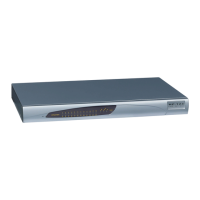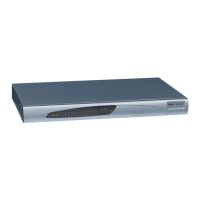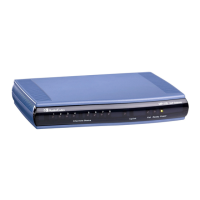43.2.4 SNMP Parameters
The SNMP parameters are described in the table below.
Table 43-13: SNMP Parameters
Parameter Description
Web: Enable SNMP
[DisableSNMP]
Enables SNMP.
[0] Enable = (Default) SNMP is enabled.
[1] Disable = SNMP is disabled and no traps are sent.
[SNMPPort]
Defines the device's local (LAN) UDP port used for SNMP
Get/Set commands.
The range is 100 to 3999. The default port is 161.
Note: For this parameter to take effect, a device reset is
required.
EMS: Keep Alive Trap Port
[KeepAliveTrapPort]
Defines the port to which keep-alive traps are sent.
The valid range is 0 - 65534. The default is port 162.
[SendKeepAliveTrap]
Enables keep-alive traps and sends them every 9/10 of the
time as defined by the NATBindingDefaultTimeout parameter.
[0] = Disable
[1] = Enable
Note: For this parameter to take effect, a device reset is
required.
[SNMPSysOid]
Defines the base product system OID.
The default is eSNMP_AC_PRODUCT_BASE_OID_D.
Note: For this parameter to take effect, a device reset is
required.
[SNMPTrapEnterpriseOid]
Defines the Trap Enterprise OID.
The default is eSNMP_AC_ENTERPRISE_OID.
The inner shift of the trap in the AcTrap subtree is added to
the end of the OID in this parameter.
Note: For this parameter to take effect, a device reset is
required.
[acUserInputAlarmDescription]
Defines the description of the input alarm.
[acUserInputAlarmSeverity]
Defines the severity of the input alarm.
[AlarmHistoryTableMaxSize]
Defines the maximum number of rows in the Alarm History
table. This parameter can be controlled by the Config Global
Entry Limit MIB (located in the Notification Log MIB).
The valid range is 50 to 100. The default value is 100.
Note: For this parameter to take effect, a device reset is
required.

